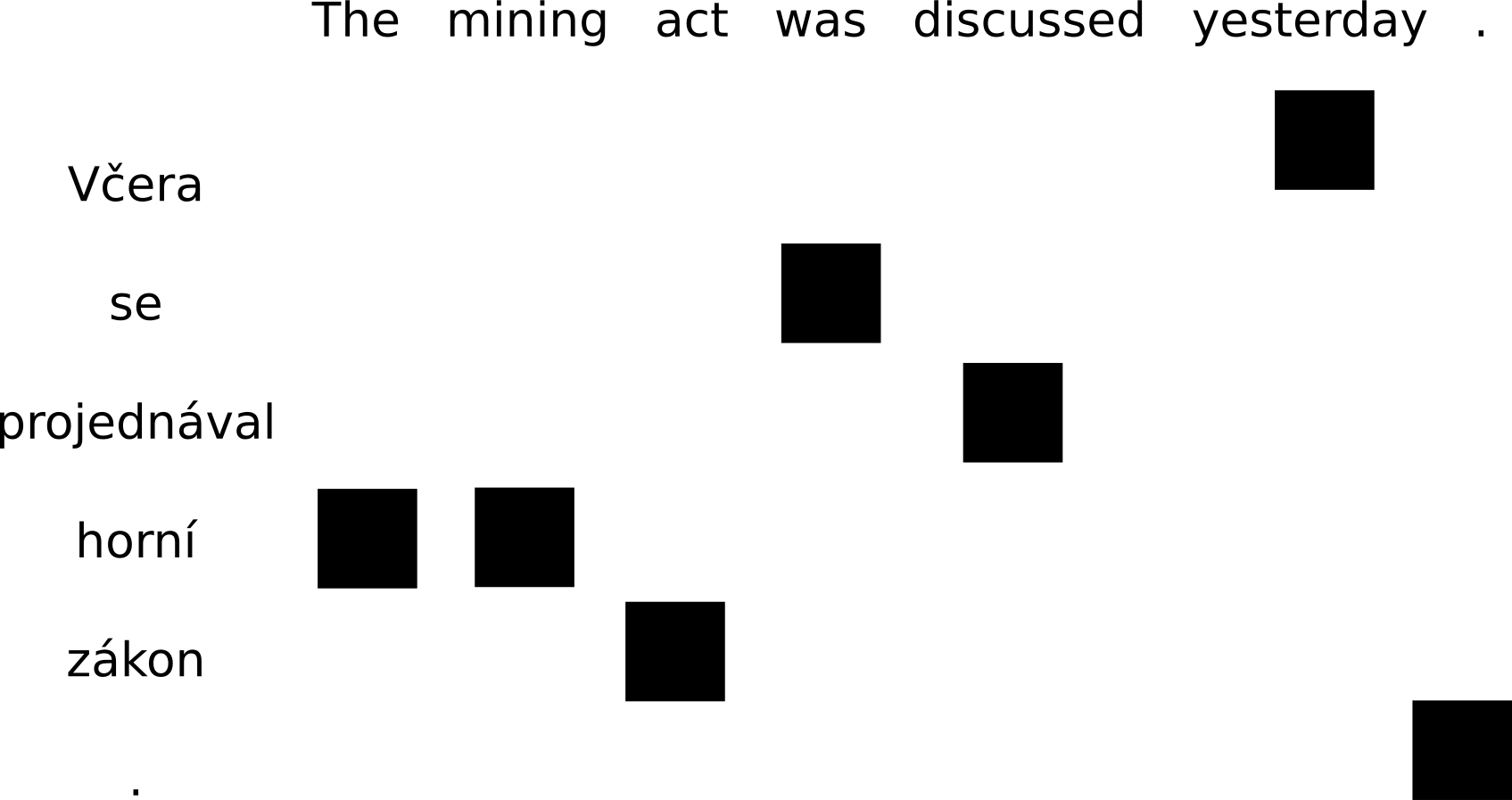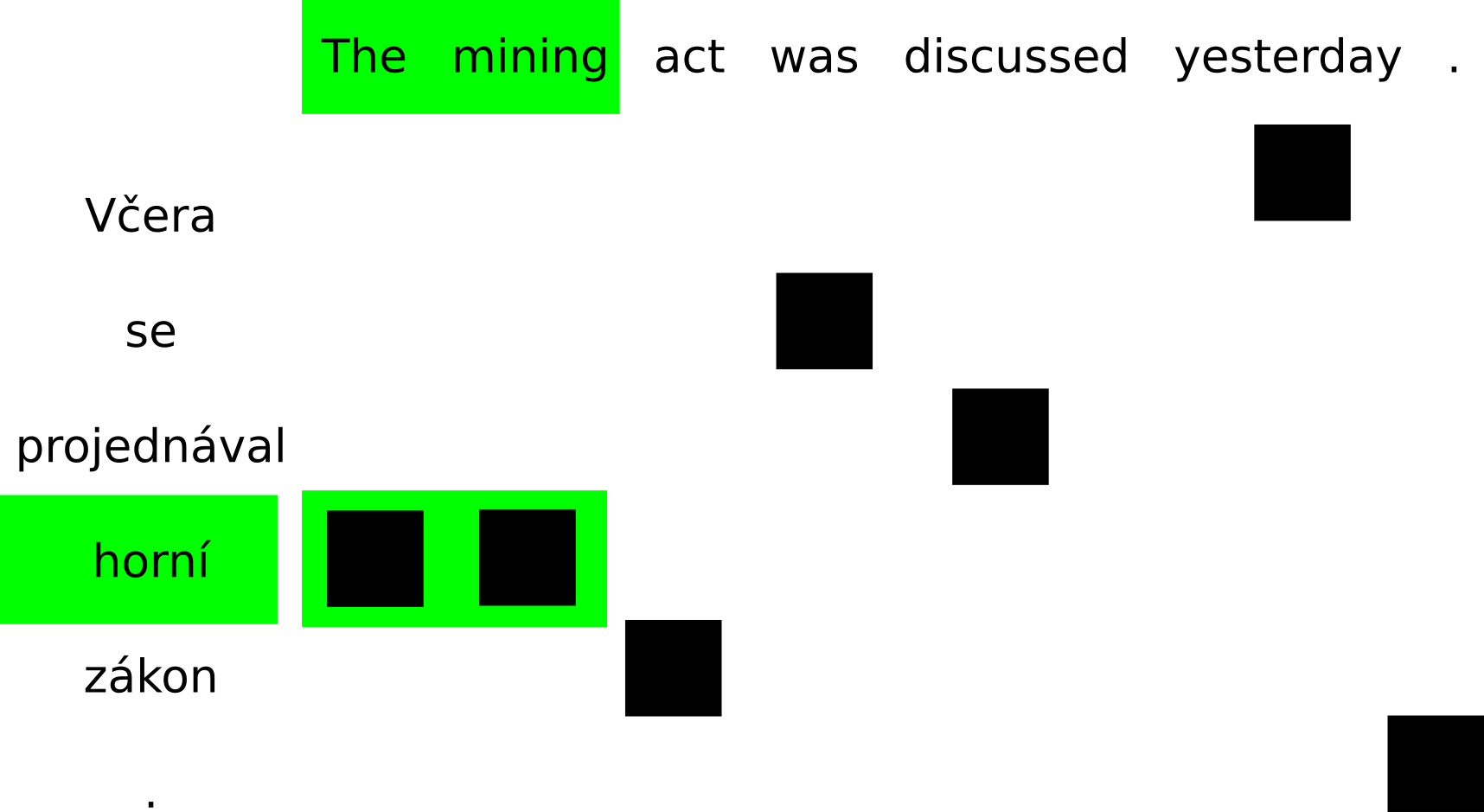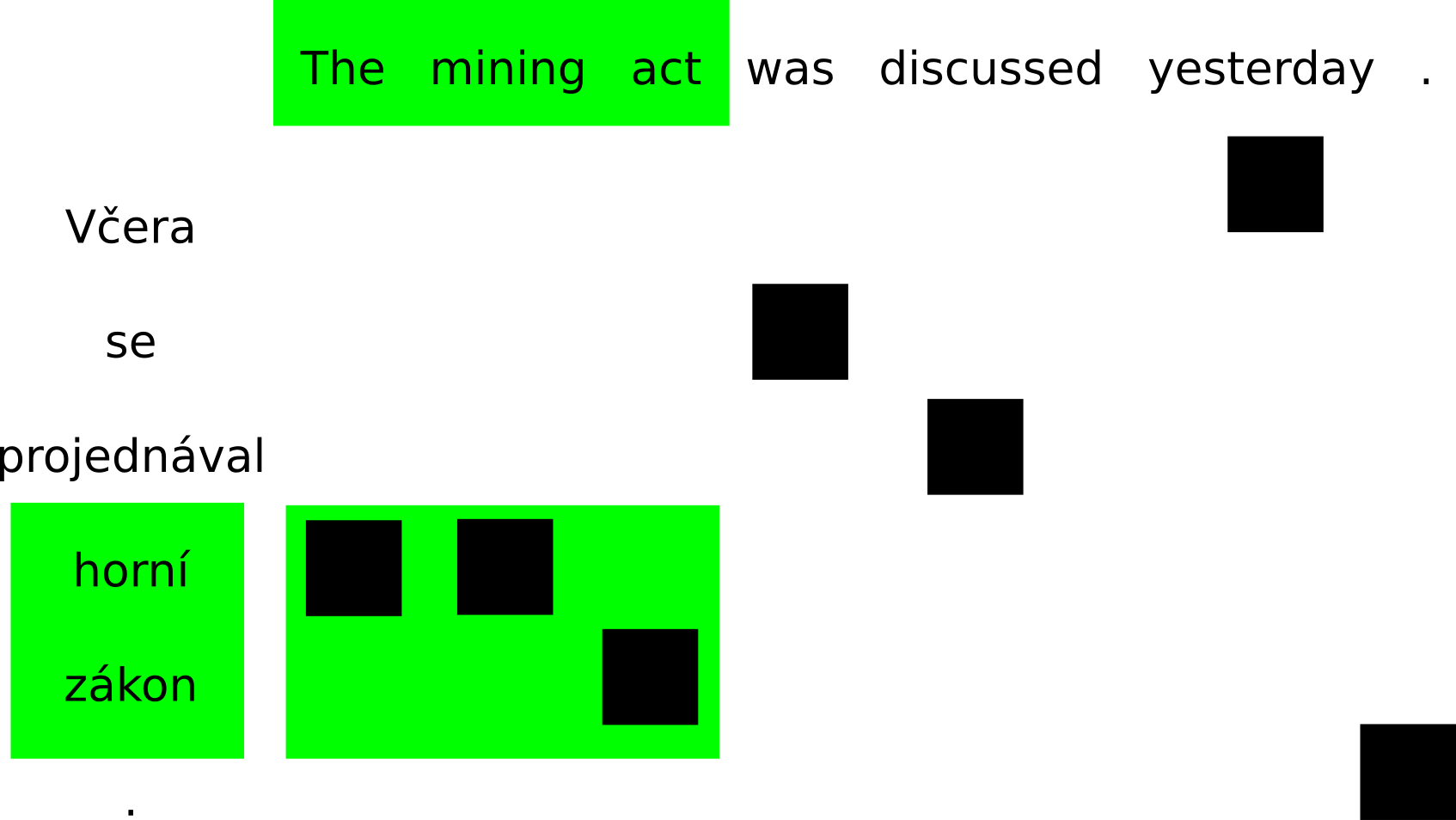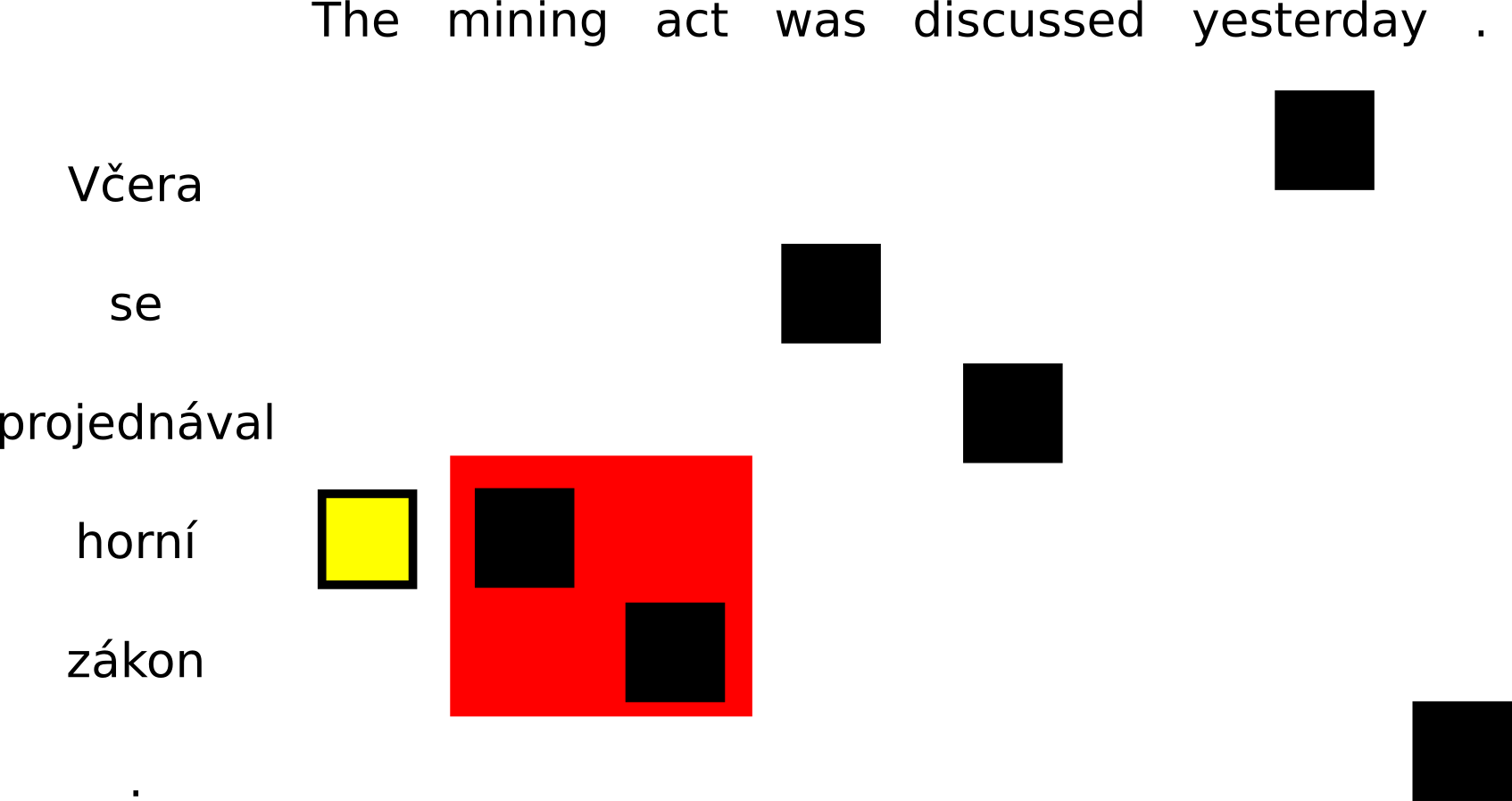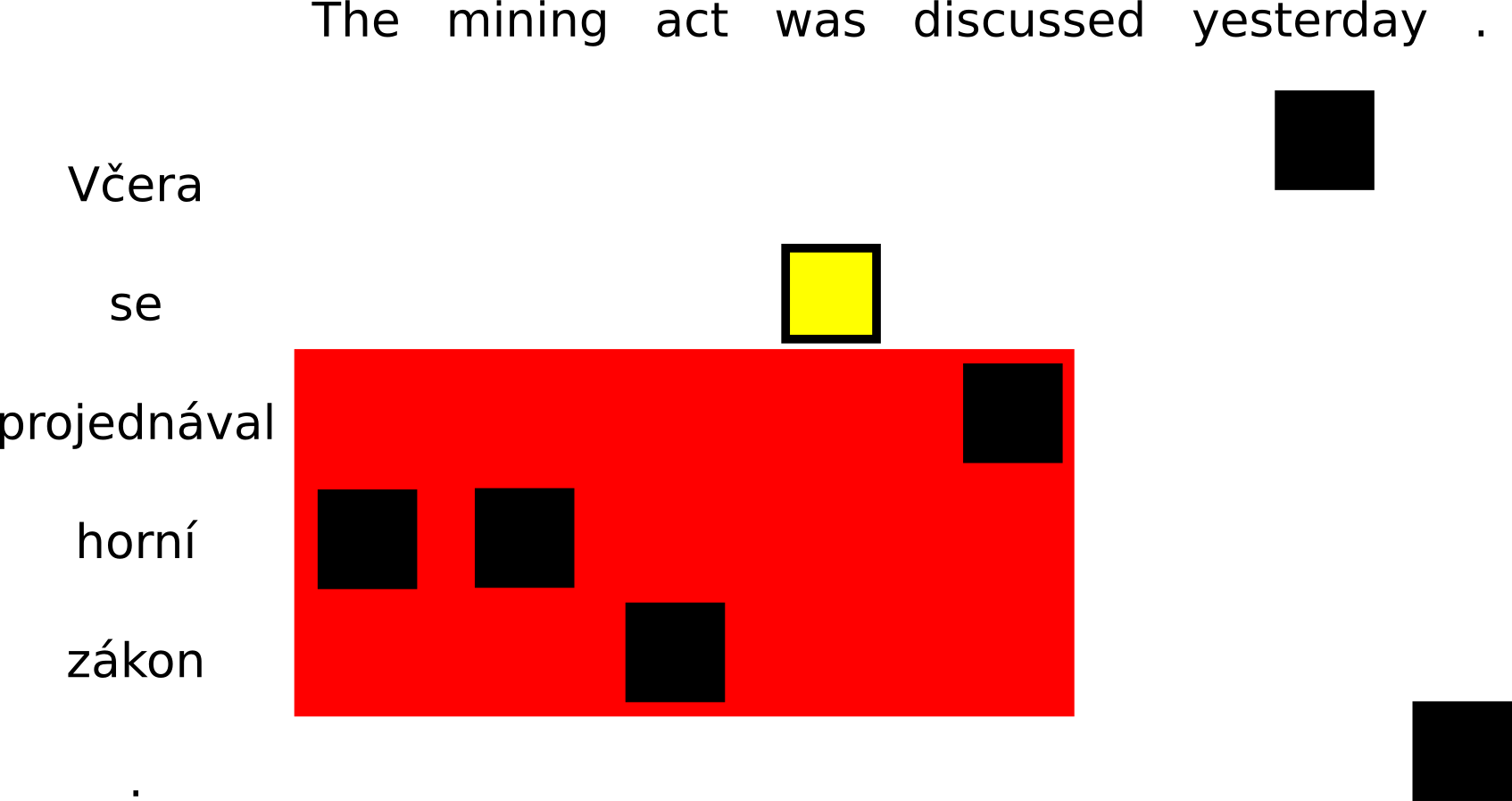Phrase-based Model
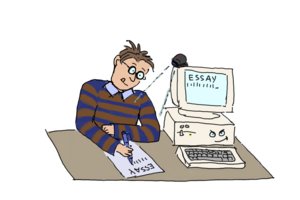 | |
| Lecture video: |
web TODO Youtube |
|---|---|
{{#ev:youtube|https://www.youtube.com/watch?v=aA4jFayPNeQ%7C800%7Ccenter}}
Phrase-based machine translation (PBMT) is probably the most widely used approach to MT today. It is relatively simple and easy to adapt to new languages.
Phrase Extraction
PBMT uses phrases as the basic unit of translation. Phrases are simply contiguous sequences of words which have been observed in the training data, they don't correspond to any linguistic notion of phrases.
In order to obtain a phrase table (a probabilistic dictionary of phrases), we need word-aligned parallel data. Using the alignment links, a simple heuristic is applied to extract consistent phrase pairs. Consider the word-aligned example sentence:
Phrase pairs are contiguous spans where all alignment points from the source side of the span fall within its target side and vice versa. These are examples of phrases consistent with this word alignment:
On the other hand, if either a source word or a target word is aligned outside of the current span, the phrase cannot be extracted:
